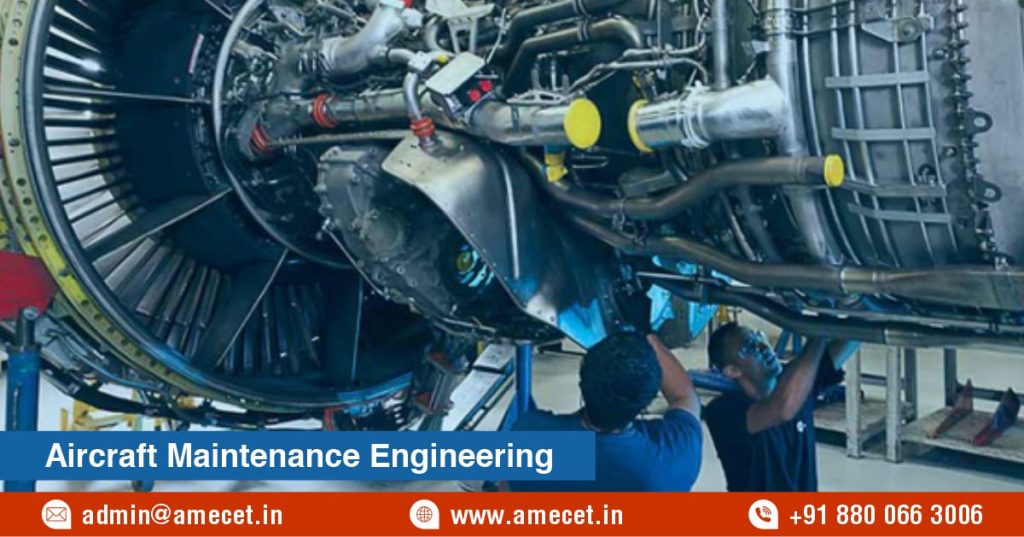What Are the Key Responsibilities of an AME?
Posted on : 23 August, 2024 3:15 pm
An Aircraft Maintenance Engineer (AME) is responsible for ensuring the safety and airworthiness of an aircraft. Key responsibilities include inspecting, maintaining, and repairing aircraft systems and components, such as engines, landing gear, and avionics. AMEs perform routine checks, troubleshoot issues, and certify that the aircraft meets all safety regulations before it takes flight. They also maintain detailed records of maintenance work and collaborate with other aviation professionals to address any potential safety concerns. Their work is crucial in preventing accidents and ensuring smooth, safe operations in the aviation industry.
Page Contents
ToggleDaily Inspection Duties
Daily inspection duties are a critical part of an Aircraft Maintenance Engineer’s (AME) responsibilities. These duties involve conducting thorough checks on various aircraft components before each flight, ensuring that everything is in proper working order. AMEs inspect the exterior for any signs of damage, check fluid levels, assess the condition of tires and landing gear, and verify that all instruments and controls are functioning correctly. These routine inspections help prevent potential issues and ensure flight safety.
Points:
- Exterior Damage Inspection: Checking for dents, cracks, or wear.
- Fluid Levels: Verifying oil, hydraulic, and fuel levels.
- Tire Condition: Inspecting tires for wear and proper inflation.
- Landing Gear: Ensuring landing gear is functioning correctly.
- Control Surfaces: Checking the movement and alignment of ailerons, rudders, etc.
- Instrument Functionality: Verifying cockpit instruments are accurate.
- Lighting Systems: Testing all external and internal lights.
- Emergency Equipment: Ensuring safety equipment like oxygen masks are in place and functional.
Compliance with Safety Regulations
Compliance with safety regulations is a fundamental responsibility of an Aircraft Maintenance Engineer (AME). AMEs ensure that all maintenance work adheres to strict aviation standards and legal requirements. This involves following detailed protocols for inspections, repairs, and certifications. AMEs must stay informed about the latest regulatory changes and ensure that every aspect of the aircraft meets these standards, thereby contributing to the overall safety and reliability of aviation operations.
Points:
- Adherence to Protocols: Following established maintenance procedures.
- Regulatory Updates: Staying informed about new regulations.
- Safety Audits: Participating in internal and external safety checks.
- Documentation: Maintaining accurate records of compliance.
- Inspection Standards: Ensuring inspections meet regulatory criteria.
- Certification: Certifying aircraft as airworthy according to regulations.
- Training: Regularly attending safety training programs.
- Reporting: Documenting and reporting any safety concerns or violations.
Emergency Repairs and Quick Response
Emergency repairs and quick response are crucial aspects of an Aircraft Maintenance Engineer’s (AME) role. When unexpected issues arise, AMEs must act swiftly to diagnose and repair the problem, ensuring the aircraft is safe for operation. This requires a deep understanding of the aircraft’s systems, the ability to work under pressure, and quick decision-making skills. Efficient emergency repairs minimize downtime and prevent delays, maintaining the safety and reliability of aviation operations.
Points:
- Rapid Diagnosis: Quickly identifying the issue.
- Swift Decision-Making: Making informed decisions under pressure.
- Technical Expertise: Applying in-depth knowledge of aircraft systems.
- Effective Communication: Coordinating with the crew and ground staff.
- Use of Specialized Tools: Employing the right tools for quick repairs.
- Temporary Fixes: Implementing temporary solutions to ensure safety.
- Documentation: Recording emergency repairs accurately.
- Post-Repair Testing: Ensuring the issue is fully resolved before flight.
Specialized Maintenance Tasks
Specialized maintenance tasks are a key responsibility of an Aircraft Maintenance Engineer (AME), requiring advanced skills and knowledge of specific aircraft systems. These tasks often involve working on complex components like avionics, engines, and landing gear, where precision and expertise are critical. AMEs may focus on certain types of aircraft or systems, ensuring that they function optimally and safely. Specialized tasks require ongoing training and certification to maintain high standards of aviation safety.
Points:
- Avionics Repairs: Maintaining and repairing electronic systems.
- Engine Overhaul: Performing detailed inspections and repairs on engines.
- Landing Gear Maintenance: Ensuring proper function and safety.
- Hydraulic Systems: Working on complex hydraulic components.
- Cabin Pressurization: Maintaining systems that control cabin pressure.
- Propulsion Systems: Repairing and optimizing propulsion mechanisms.
- Structural Repairs: Addressing issues with the aircraft’s frame.
- System Integration: Ensuring all systems work together seamlessly.
Quality Control and Final Checks
Quality control and final checks are vital duties of an Aircraft Maintenance Engineer (AME) to ensure the aircraft’s safety and performance. After all maintenance and repairs are completed, AMEs conduct thorough inspections to verify that every task meets stringent aviation standards. These final checks involve reviewing all systems, components, and documentation, ensuring no detail is overlooked. Quality control is essential for maintaining the reliability of the aircraft and preventing potential issues during flight.
Points:
- System Functionality: Verifying all systems operate correctly.
- Component Integrity: Checking the condition of repaired or replaced parts.
- Documentation Review: Ensuring all maintenance records are accurate.
- Regulatory Compliance: Confirming adherence to aviation standards.
- Operational Testing: Running tests to ensure everything functions as expected.
- Visual Inspection: Conducting a final visual check for any issues.
- Pilot Feedback: Collaborating with pilots for additional insights.
- Sign-Off: Certifying the aircraft as airworthy after all checks.
In conclusion, the role of an Aircraft Maintenance Engineer (AME) is both critical and multifaceted, encompassing a wide range of responsibilities from daily inspections to specialized maintenance tasks. AMEs play a pivotal role in ensuring the safety, reliability, and efficiency of aircraft operations by adhering to stringent safety regulations, conducting emergency repairs, and performing quality control checks. Their expertise and quick response are essential in maintaining the high standards required in the aviation industry. As technology advances and aircraft systems become more complex, the importance of skilled and knowledgeable AMEs will continue to grow, ensuring safe skies for all.

